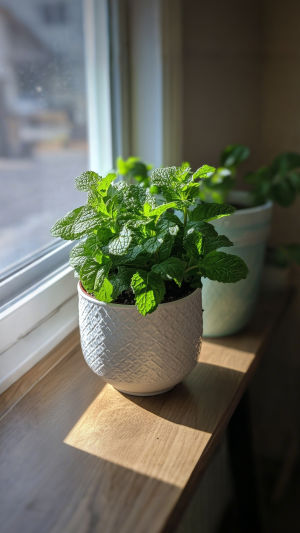<h3>Welcome to Our Herb Growing Journey</h3>
Hello, herb lovers! Have you ever wished to pick fresh mint or basil right from your kitchen to add a burst of flavor to your meals? We're excited to share detailed tips on growing popular kitchen herbs like mint, basil, and rosemary.
Together, we'll explore how to nurture these green flavor masters and make the most of them in everyday cooking. Let's get started and bring fresh aromas into our homes!
<h3>Choosing the Right Herbs for Your Kitchen</h3>
We suggest starting with easy-to-grow herbs that thrive indoors or on a sunny balcony. Mint grows rapidly and offers a refreshing scent perfect for drinks and desserts. Basil adds a sweet, peppery note ideal for salads and pasta, while rosemary's pine-like aroma enhances roasted dishes. These herbs are versatile and having them fresh elevates any meal.
<h3>Planting and Growing Essentials</h3>
Herbs prefer well-draining soil and plenty of sunlight. We recommend using a potting mix rich in organic matter and placing pots where they get at least 4-6 hours of sunlight daily, such as a south-facing window or balcony. Mint likes moist soil but not waterlogged; basil prefers soil that dries slightly between waterings; rosemary thrives in drier, sandy soil with good drainage. Regular pruning encourages bushier growth and delays flowering, which can reduce leaf flavor.
<h3>Watering and Feeding Tips</h3>
We find moderate, consistent watering works best. Check soil moisture before watering—if the top inch is dry, it's time to water. Overwatering can cause root rot, especially for rosemary. Feeding herbs with a balanced liquid fertilizer every 4-6 weeks during the growing season supports healthy growth and aroma. Avoid heavy fertilizers that may weaken flavor.
<h3>Harvesting and Using Fresh Herbs</h3>
Harvesting regularly keeps herbs productive. We recommend picking leaves in the morning when essential oils are most concentrated. For mint and basil, pinch off the top leaves to encourage new shoots. Snip rosemary leaves as needed but avoid cutting more than one-third at once. Use fresh herbs in salads, sauces, teas, or as garnishes. Drying or freezing surplus leaves preserves flavor for later.
<h3>Common Challenges and How We Handle Them</h3>
Sometimes herbs face pests like aphids or fungal problems from overwatering. We suggest rinsing leaves with water or using Neem oil sprays. Good air circulation and avoiding wetting leaves during watering help prevent diseases. Leggy growth usually means more light or pruning is needed. Adjusting care based on observation keeps herbs healthy and flavorful.
<h3>Let's Grow Flavor Together!</h3>
Growing herbs at home connects us with nature and enhances our cooking. We encourage you to try different varieties and share your favorite herb recipes with us. What herbs do you love to grow or cook with? Let's inspire each other to create kitchens filled with fresh, green magic!
With care and attention, your kitchen can become a fragrant herb haven all year round. Happy planting and cooking!
This article is based on expert gardening advice and culinary uses to help you successfully cultivate and enjoy fresh herbs.





